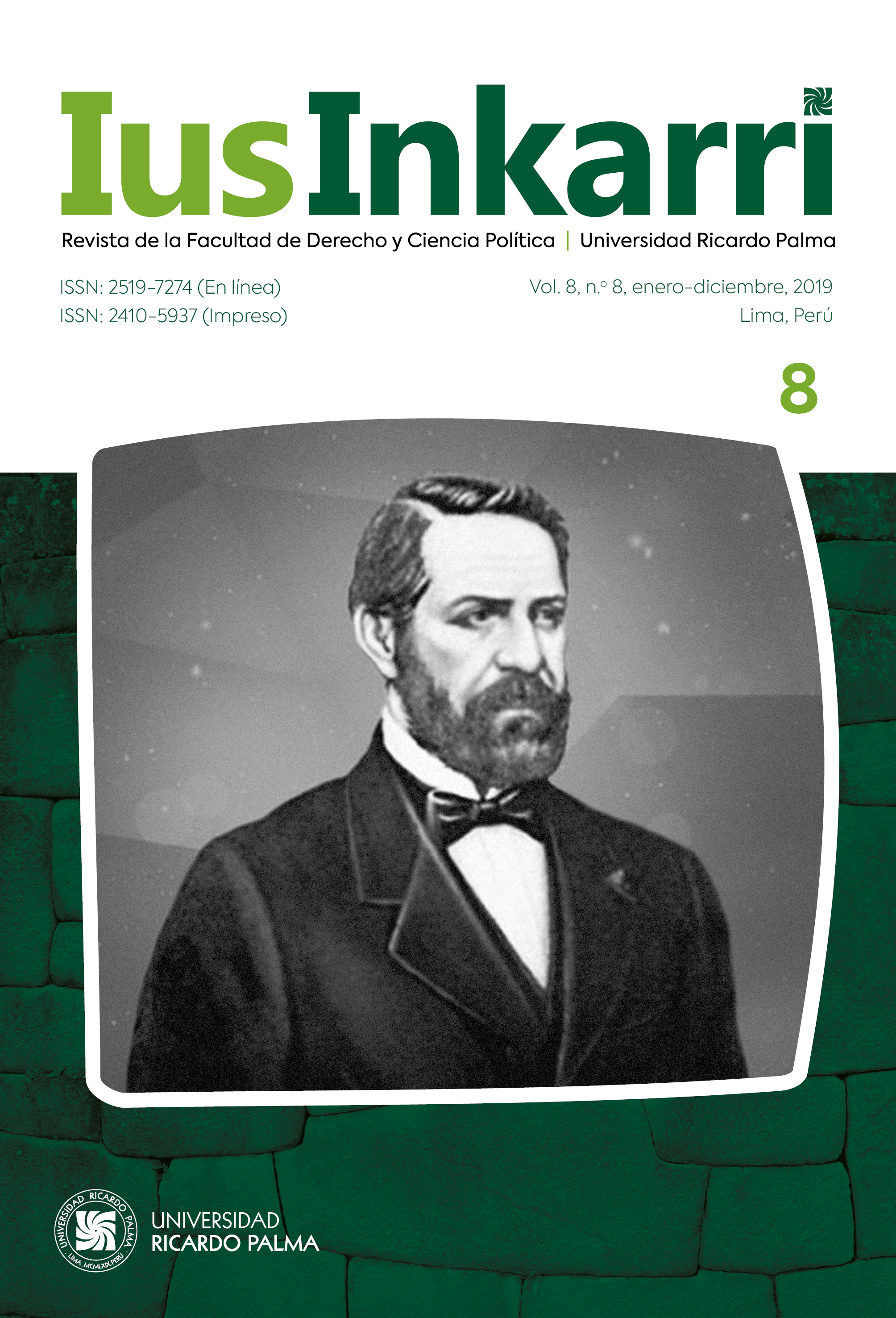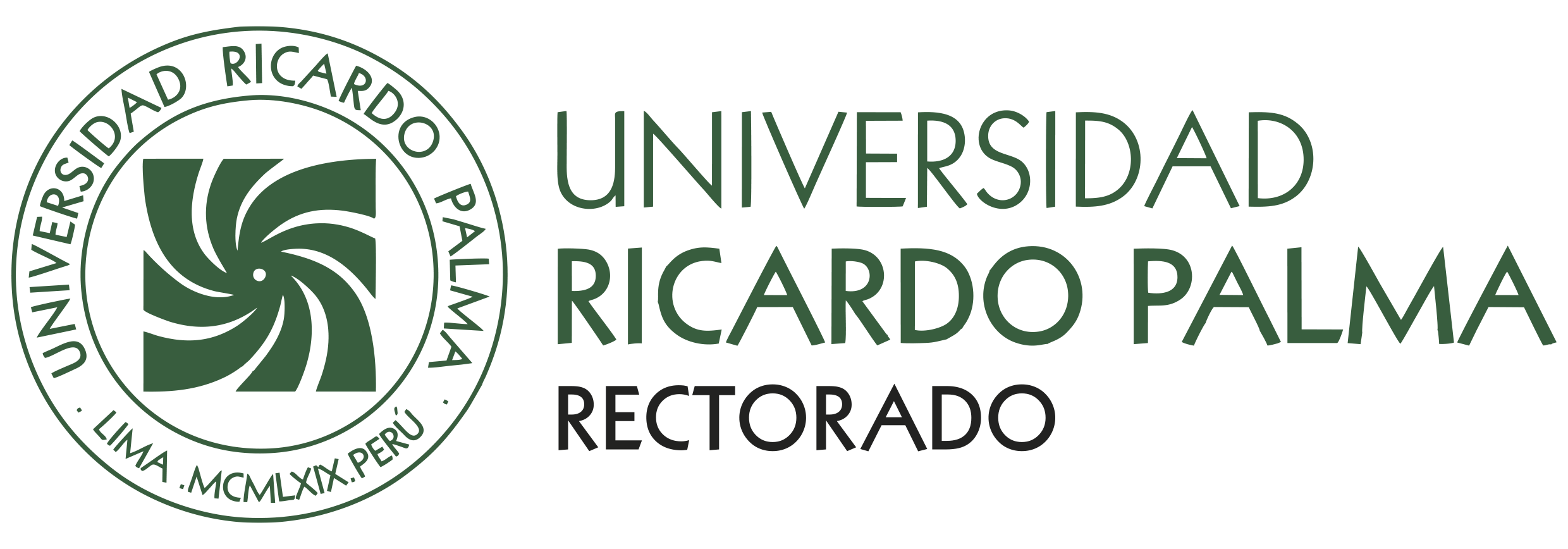An economic vision of the corruption phenomenon in Peru
DOI:
https://doi.org/10.31381/iusinkarri.vn8.2735Keywords:
corruption, law and economics, public choice, rational ignorance, incentivesAbstract
Corruption is a complex phenomenon that has been faced only from a traditional perspective, ignoring the economic incentives involved in its greatest incidence. The result of the measures adopted by the State has been quite disappointing, and inefficient in terms of reducing the incidence of corruption acts. This essay aims to address the problem from an economic perspective, based on the approaches of the Public Choice Theory and the New institutionalism. Thus, we will address the way in which economic incentives are aligned in the conduct of corrupt and corruptors, bureaucrats, candidates and voters. Finally, some measures are proposed to reduce the incidence of acts of corruption, considering the aforementioned approaches.
Downloads
References
ANDVIG, J. C., FJELDSTAD, O.-h., AMUNDSEN, I., & SØREIDE, T. (2000). Research on Corruption. A policy oriented survey. Chr. Michelsen Institute (CMI) & Norwegian Institute of International Affairs (NUPI). Obtenido de http://www.icgg.org/downloads/contribution07_andvig.pdf
ATILIANO, I. (12 de Julio de 2019). Fuerza Popular y Apra no se cansan de blindar a Pedro Chávarry en el Congreso. Perú 21. Obtenido de https://peru21.pe/politica/fuerza-popular-apra-cansan-blindar-pedro-chavarry-congreso-489872-noticia/
BAYLY, J. (6 de diciembre de 2010). La columna de Bayly: La plata llega sola. Perú 21. Obtenido de http://archivo.peru21.pe/noticia/680187/columa-bayly-plata-llega-sola
BECKER, G. (1976). The Economic Approach to Human Behavior. Chicago: The University of Chicago Press.
BOEHM, F., & Lambsdorff, J. G. (Segundo Semestre de 2009). Corrupción y Anticorrupción: Una perspectiva Neo-institucional. Revista de Economía Institucional, II(21), 45-71.
BUCHANAN, J. M., & Tullock, G. (1999 /1962). The Collected Works of James M. Buchanan, Vol. 3. The Calculus of Consent:Logical Foundations of Constitutional Democracy. Indianapolis: Liberty Fund, Inc.
BULLARD, A. (2006). Derecho y Economía. El Análisis Económico de las Instituciones Legales. Lima: Palestra Editores.
BULLARD, A. (20 de junio de 2015). ¿En qué se parecen la FIFA y el gobierno? El Comercio. Obtenido de https://elcomercio.pe/opinion/ columnistas/parecen-fifa-gobierno-alfredo-bullard-373070
BULLARD, A. (22 de Octubre de 2016). Naturalmente Corruptos. El Comercio. Obtenido de https://elcomercio.pe/opinion/columnistas/naturalmente-corruptos-alfredo-bullard-273327
COASE, R. (1974). The Market for Goods and the Market for Ideas. The American Economic Review, 64(2), 384-391. Obtenido de www.jstor.org/stable/1816070
COASE, R., & WILLIAMS, E. W. (Mayo de 1964). The Regulated Industries: Discussion. The American Economic Review, 54(3), 192-197. Obtenido de http://www.jstor.org/stable/1818503
FERNÁNDEZ DE MANTILLA, L., & Flórez Pinilla, K. (19 de Junio de 2008). ¿Qué evalúa el ciudadano al momento de votar? Algunas apreciaciones desde el Enfoque Racional. Reflexión Política, 10(19), 196-204. Obtenido de https://www.redalyc.org/pdf/110/11001916.pdf
GUZMÁN NAPURÍ, C. (2002). La llamada teoría del public choice y una introducción a su aplicación al control de los actos estatales. Ius et Veritas(24), 114-124.
LÓPEZ, J. (2004). Grupos de poder, corrupción y exclusión. Una propuesta de análisis. Materiales para la discusión. Construcción de paz en El Salvador, 1-16.
NAVARRO, P. (12 de Septiembre de 2016). Políticos con el futuro en el bolsillo. Un 40 por ciento de los ministros de la democracia, en consejos de administración. El Siglo de Europa, 24-30.
ORBACH, B. (15 de Mayo de 2013). What Is Government Failure? Yale Journal on Regulation Online(44), Arizona Legal Studies Discussion Paper 13-10. Obtenido de https://ssrn.com/abstract=2219709
POSNER, R. (2009). The Economics of the Revolving Door. En G. Becker, & R. Posner, Uncommon Sense: Economic Insights, from Marriage to Terrorism (págs. 171-176). Chicago: The University of Chicago Press.
Redacción EC. (29 de Enero de 2019). El Perú mantiene un alto índice de percepción de corrupción. El Comercio. Obtenido de https://elcomercio.pe/politica/peru-mantiene-alto-indice-percepcion-corrupcion-noticia-602105
Redacción Gestión. (30 de Septiembre de 2017). Odebrecht pagó US$ 15 millones en sobornos a peruanos vía banco de Andorra, revela El País. Gestión. Obtenido de https://gestion.pe/peru/politica/odebrecht-pago-us-15-millones-sobornos-peruanos-via-banco-andorra-revela-pais-144542-noticia/
RODRÌGUEZ, D. (3 de Marzo de 2017). Colaboración Eficaz en el Perú: implementación, funcionamiento y perspectivas. Obtenido de Enfoque Derecho: https://www.enfoquederecho.com/2017/03/03/colaboracion-eficaz-en-el-peru-implementacion-funcionamiento-y-perspectivas/
SALAZAR HERRERA, M. (23 de Abril de 2019). Caso Odebrecht: Barata ratifica aportes de campaña y delata a Graña y Montero. Convoca.pe. Obtenido de http://convoca.pe/agenda-propia/caso-odebrecht-barata-ratifica-aportes-de-campana-y-delata-grana-y-montero
SOLANET, M. (Abril de 1997). La Corrupción en las Instituciones Públicas y Privadas. Valores en la sociedad industrial, 15(38), 31-40.
TULLOCK, G. (2005). The Selected Works of Gordon Tullock, Vol. 5. The Rent-Seeking Society. Indianapolis: Liberty Fund, Inc.
YAMADA, G., & MONTERO, R. (2011). Corrupción e inequidad en los servicios públicos en el Perú. Lima: Universidad del Pacífico. Consorcio de Investigación Económica y Social.
Downloads
Published
How to Cite
Issue
Section
License
Copyright (c) 2019 Enrico Marcel Huarag Guerrero

This work is licensed under a Creative Commons Attribution 4.0 International License.













